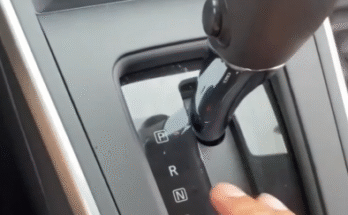
It’s a moment we’ve all either experienced or heard about: you’re driving along, minding your own business, when that ominous glow on your dashboard suddenly appears — the dreaded check engine light. It’s the car’s way of saying, “Something’s up,” but with little detail and lots of anxiety attached.
Now imagine this: you’re mentally preparing for a trip to the mechanic, calculating how much it might cost, when poof — the light disappears. Just like that. No explanation. No warning. It’s like your car fixed itself.
Amazing? Yes. Confusing? Absolutely. Let’s talk about it.

What Does the Check Engine Light Really Mean?
The check engine light (CEL) is part of your vehicle’s onboard diagnostics system (OBD-II). When the car’s computer detects something unusual in the emissions system, engine, or powertrain, it triggers this light.
But here’s the tricky part: the reasons it comes on range from extremely minor to critically important. It could mean:
- A loose or missing gas cap
- A faulty oxygen sensor
- Catalytic converter problems
- Engine misfires
- A bad spark plug
- Transmission trouble
So when the light comes on, it doesn’t mean your engine is doomed — but it does mean something needs attention.

Why Would the Check Engine Light Turn Off By Itself?
When that little light vanishes as mysteriously as it appeared, it can feel like magic. But here are the most likely explanations:
1. The Problem Resolved Itself
Some issues are intermittent. If the system was triggered by a temporary glitch — like a momentary misfire, poor fuel quality, or a loose gas cap — and the condition corrects itself, the light may go off after a few drive cycles.
2. You Fixed It Without Knowing
Yes, it happens. Maybe you tightened the gas cap properly after filling up. Or perhaps you added the right kind of fuel and cleared up a minor combustion issue. Whatever it was, your unintentional “repair” might have been enough.
3. The Car’s Computer Cleared It Automatically
Modern vehicles have smart systems that monitor whether a detected problem persists. If it doesn’t show up again after a certain number of drive cycles, the system clears the code and turns off the light.
4. The Battery Was Disconnected or Died
If your battery loses power — from being disconnected or drained — it resets the onboard computer, including the check engine light. That doesn’t mean the problem is gone, just that the system isn’t currently aware of it.
Should You Still Worry?
Short answer: yes and no.
If the check engine light turned off and your car is running normally, it’s likely nothing serious. But you should still follow up:
- Use an OBD-II scanner to check for stored trouble codes.
- Monitor your vehicle for unusual behavior — rough idling, loss of power, poor fuel economy, etc.
- Keep track of when and how often the light appears.
Think of it like a fire alarm that goes silent after beeping — just because it stopped doesn’t mean you shouldn’t check for smoke.

What To Do When the Check Engine Light Comes On — and Off Again
Here’s a checklist of steps to take when your CEL plays this mysterious game:
- Check Your Gas Cap
- Ensure it’s tight and clicks at least three times.
- A loose gas cap is one of the most common and easily fixable causes.
- Scan for Codes
- Auto parts stores often offer free diagnostic scans.
- Even if the light is off, stored codes can tell you what happened.
- Log the Incident
- Note the date, how the car was behaving, and when the light turned off.
- This helps mechanics (and your memory) if the problem returns.
- Drive and Observe
- If everything seems fine, you’re probably okay to continue driving.
- But if the light comes back or the car acts strangely, get it checked ASAP
When You Should Take It More Seriously
Sometimes the check engine light turning off doesn’t mean you’re out of the woods. If any of the following apply, don’t delay:
- The light was flashing (this indicates a more serious issue like engine misfire).
- You noticed odd noises, vibrations, or performance issues.
- You’ve had multiple warning lights come on together.
- You recently experienced extreme driving conditions (e.g., towing, heatwaves).

Can You Just Ignore It?
Technically? Yes. Should you? Probably not.
A disappearing light doesn’t mean the root issue is gone forever. Some problems may get worse over time, quietly causing long-term damage — especially to systems like your catalytic converter, which can be very expensive to replace.
Even if you’re not rushing to the shop, don’t ignore it completely. A quick scan and some preventative thinking can save you from a costly repair down the road.
Stories From the Road: Real Drivers, Real Check Engine Drama
- Mark from Seattle: “My CEL came on during a mountain road trip. I tightened my gas cap and it vanished the next day. Haven’t seen it since!”
- Tasha from Atlanta: “Mine disappeared after a battery change. I thought I was in the clear until it came back a week later. Turns out it was a faulty O2 sensor.”
- Carlos from LA: “I ignored mine after it went away. Six months later, I was hit with a $1,200 bill for a clogged catalytic converter. Lesson learned!”

Final Thoughts: Trust Your Car, But Verify
Yes, it’s amazing when that warning light vanishes on its own. It’s like your car decided to give you a break. But don’t treat it like a miracle. Treat it like a lucky warning shot.
Stay curious. Stay informed. And don’t wait for things to go wrong again before you take action.
When your check engine light disappears, it’s worth celebrating — and investigating.
Because peace of mind isn’t just about what’s not showing up on the dash. It’s about knowing you’ve done everything you can to keep rolling safely.
Happy driving! 🚗✨



